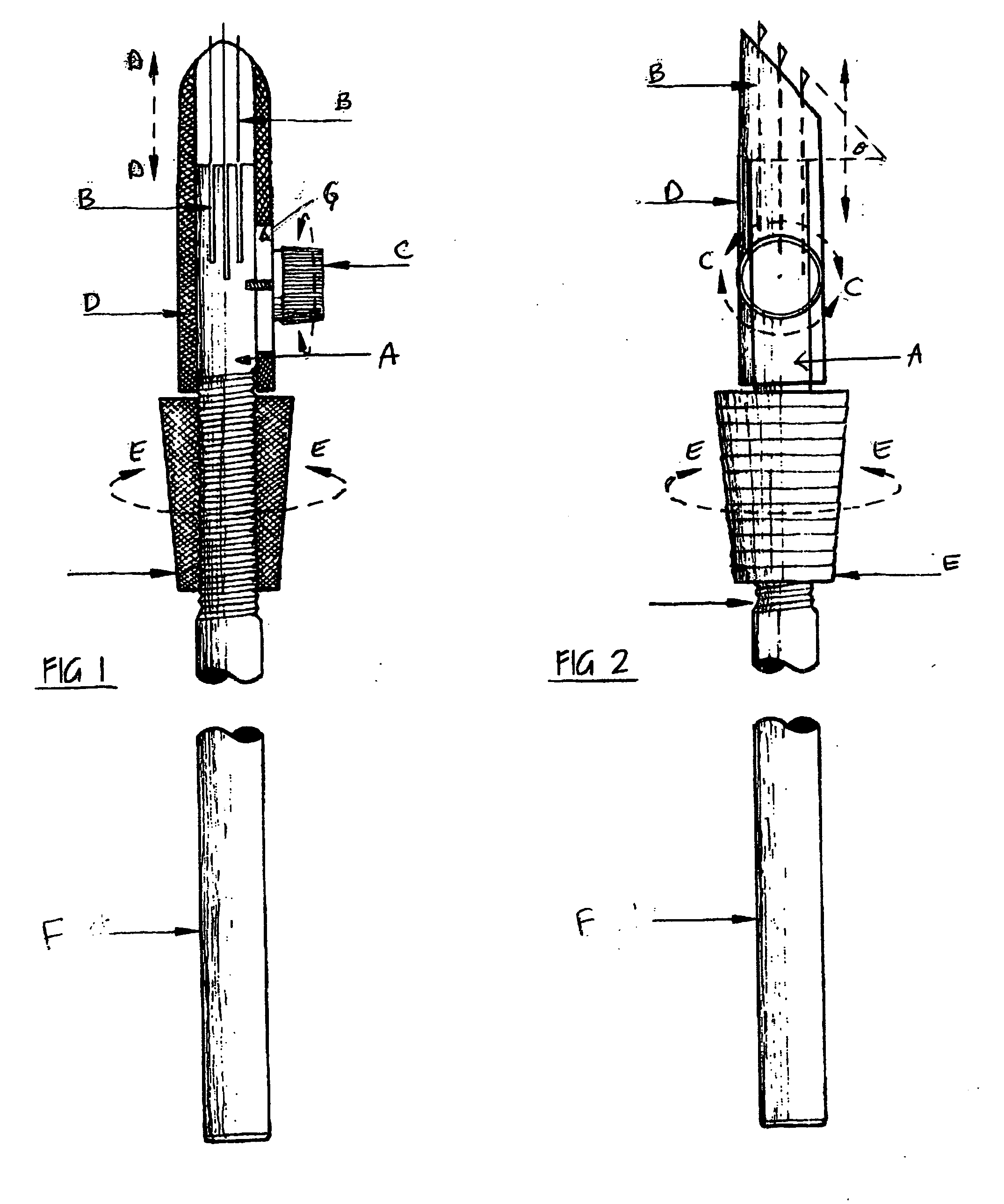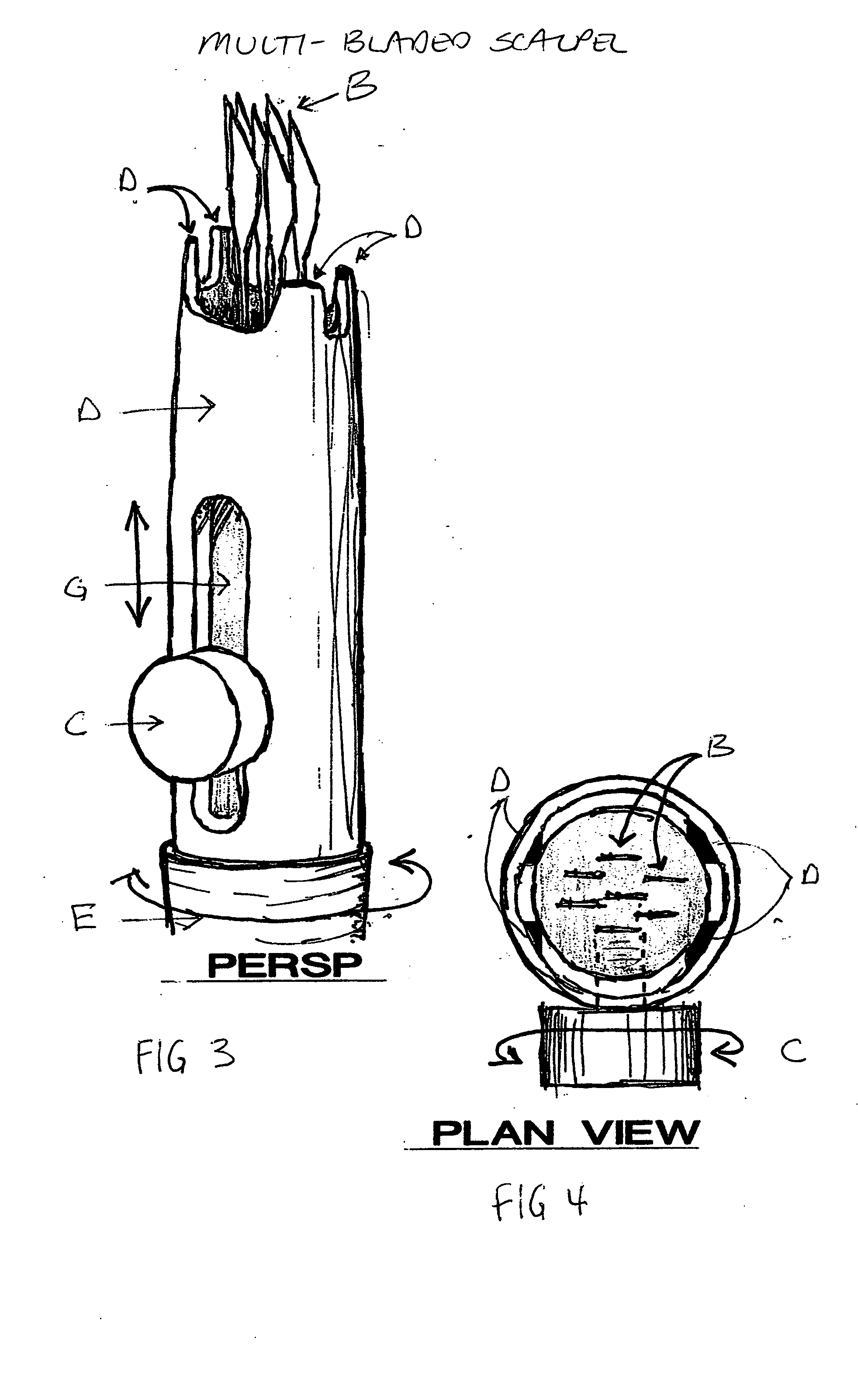Multi-bladed surgical scalpel
a scalpel and multi-blade technology, applied in the field of multi-bladed surgical scalpels, can solve the problems of introducing the potential for repetitive stress injury to the surgeon, the very precise individual incision making process is very time-consuming, and the hand fatigue is very high, so as to reduce hand fatigue, reduce the cost of manufacturing, and repeat the effect of incision spacing and alignmen
- Summary
- Abstract
- Description
- Claims
- Application Information
AI Technical Summary
Benefits of technology
Problems solved by technology
Method used
Image
Examples
Embodiment Construction
[0020] This multi-bladed scalpel is used to create an array of recipient site incisions for hair follicle transplantation. The scalpel creates an array of incisions of uniform depth, then the scalpel is moved to an adjacent area on the scalp to repeat the process. In this embodiment, the blade holder is machined from Delrin, and all the other parts from aluminum, although newer versions might use different materials.
[0021] The blade holder is machined from medical grade Delrin, using cylindrical elongate sections. Blade mounting holes are then drilled into the distal end of the section such that the angle of the plane defined by the blade tips is ergonomically desirable angle. The blade holes get deeper as they are drilled from left to right across the distal tip of the blade holder to achieve this angle. A hole is drilled and tapped halfway along the length of the cylindrical face of the section of the rod, and another hole is drilled and tapped on the circular face of the proxima...
PUM
 Login to View More
Login to View More Abstract
Description
Claims
Application Information
 Login to View More
Login to View More - R&D
- Intellectual Property
- Life Sciences
- Materials
- Tech Scout
- Unparalleled Data Quality
- Higher Quality Content
- 60% Fewer Hallucinations
Browse by: Latest US Patents, China's latest patents, Technical Efficacy Thesaurus, Application Domain, Technology Topic, Popular Technical Reports.
© 2025 PatSnap. All rights reserved.Legal|Privacy policy|Modern Slavery Act Transparency Statement|Sitemap|About US| Contact US: help@patsnap.com



